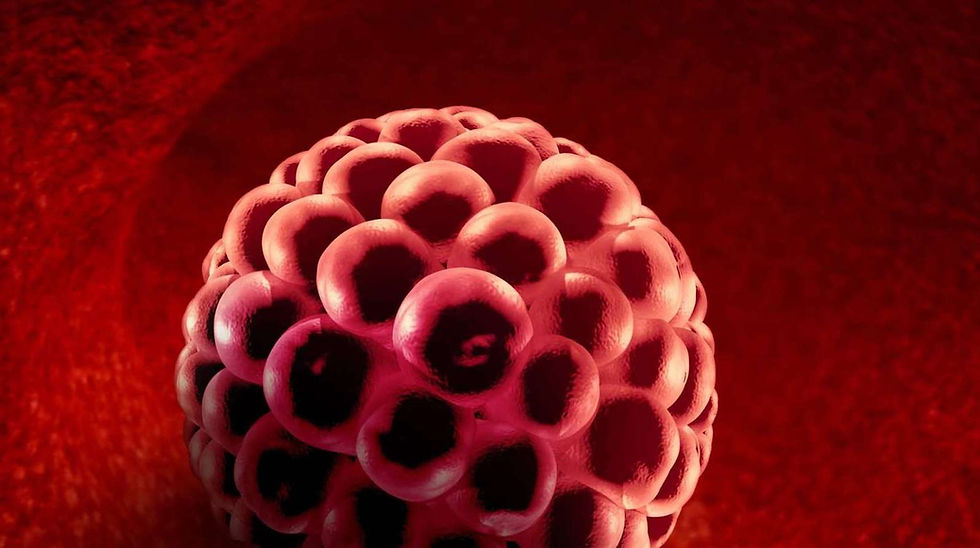Seed Cycling and Fertility
- Dr. Jaime DeGuzman, DTCM, L.Ac

- Oct 31, 2023
- 4 min read
With plenty of studies proving the effectiveness of individual seeds to boost the production of specific hormones, the idea of seed cycling seems to have validity, although there are no specific randomized controlled trials to prove it. Here's what I've found on the topic:

Introduction
In short, seed cycling is eating fertility-friendly seeds at specific times of a woman’s menstrual cycle. There are 4 different seeds that are consumed during the two main phases of the menstrual cycle; pumpkin and flax seeds during the follicular phase, and sesame and sunflower seeds during the luteal phase.
Seed Cycling and hormones
During the follicular phase - from cycle day 1 to ovulation (typically cycle day 14), the lining of the uterus (endometrium) begins to thicken in preparation for implantation. Since the main hormone responsible for doing this is estrogen, a woman could strengthen this phase by eating seeds that would naturally stimulate the body to boost the right kind of estrogen (estradiol) and the right amount. Because flax seed is an estrogenic adaptogen - it can increase or decrease the amount of estrogen depending on what the body needs, it is a great choice for the follicular phase. Pumpkin seeds, like flax seeds, also contain lignan phytoestrogens – a bioactive compound with many properties including changing estrogen metabolism, are also included in this first phase. Together with flax seeds, pumpkin seeds are a powerful combination to regulate estrogen (estradiol) during the follicular phase.
During the second phase of the menstrual cycle, or the luteal phase - from after ovulation until menstruation (if the egg is not fertilized), the body begins to prepare itself for pregnancy. Progesterone is the main hormone that is responsible for stimulating the growth of blood vessels in the endometrium, and stimulating glands in the endometrium to secrete nutrients that will nourish the early embryo. Therefore, seeds that promote progesterone are consumed during the second phase of the menstrual cycle, the luteal phase. Several studies have shown that vitamin E and Selenium can increase progesterone levels. An animal study that was done in 2019 where ewes were injected with vitamin E and selenium concluded that “injections positively improved pregnancy rates determined by progesterone assay”. Since sunflower seeds have large amounts of vitamin E and selenium, they are the ideal candidate to be used during the second phase of the menstrual cycle. Sesame seeds are also used during this phase. This is mainly because they are rich in zinc – a mineral that has been proven to increase the production of progesterone, but also because they contain lignans that help block excess estrogen while progesterone rises. A study done with rabbits reported a strong correlation between urine progesterone and serum zinc.
“injections (of vitamin E & Selenium) positively improved pregnancy rates determined by progesterone assay"
How to Seed Cycle
Get organic seeds and grind, in a coffee grinder, enough for 2 or 3 days. Keep all the seeds in the refrigerator. The oils of these seeds, specially Omega-3, are very volatile and can go rancid easily if not stored in a dark and cool place.
During the follicular phase, mix one tablespoon of ground flax seed and one tablespoon of ground pumpkin seed with your morning oatmeal or smoothie. Repeat until cycle day 15.
During the luteal phase (starting on cycle day 15), mix one tablespoon of ground sunflower seeds and one tablespoon of ground sesame seeds with your morning oatmeal or smoothie. Repeat until the end of the cycle.
Acupuncture and female hormones
At the core of acupuncture is the concept of two integral energies, yin and yang, being in perfect balance. When these energies are out of balance disharmony appears. In Traditional Chinese Medicine estrogen is considered yin, and progesterone is considered yang, and when these two hormones are in balance there are normal periods and conception happens easily. In biomedicine, progesterone and estrogen have a symbiotic relationship; one is needed to help control the other. When this balance is interrupted, for example, estrogen levels are too high and progesterone levels are too low, periods are not normal, conception does not happen, there are mood swings, weight gains, etc.
Acupuncture is very effective in balancing these hormones – creating the right amount at the right time. A meta-analysis study published in 2019 by Evidence-Based Complementary and Alternative Medicine, a peer-reviewed open-access medical journal, looked at several studies where acupuncture was used to balance hormones. Overall, studies showed that acupuncture increases estrogen, especially estradiol, progesterone, and other hormones. Estradiol level was increased in most of the studies except in 3 studies where the levels were decreased. This meta-analysis study concluded by saying that:
“This study possibly indicates that acupuncture changes sex hormone in various gynecological conditions in women”
Conclusion
Seed cycling proposes to balance estrogen and progesterone through the actions of vitamins and minerals (phytoestrogens, zinc, selenium, and vitamin E) found in key seeds. By combining
flax seeds and pumpkin seeds to support the estrogen-dominant stage of the menstrual cycle – the follicular phase, and combining sesame and sunflower seeds help the progesterone dominant phase – the luteal phase, an ideal amount of these hormones could be achieved at the right time of the cycle. In addition, there are several studies supporting the positive effect of acupuncture to balance estrogen and progesterone.






Comments